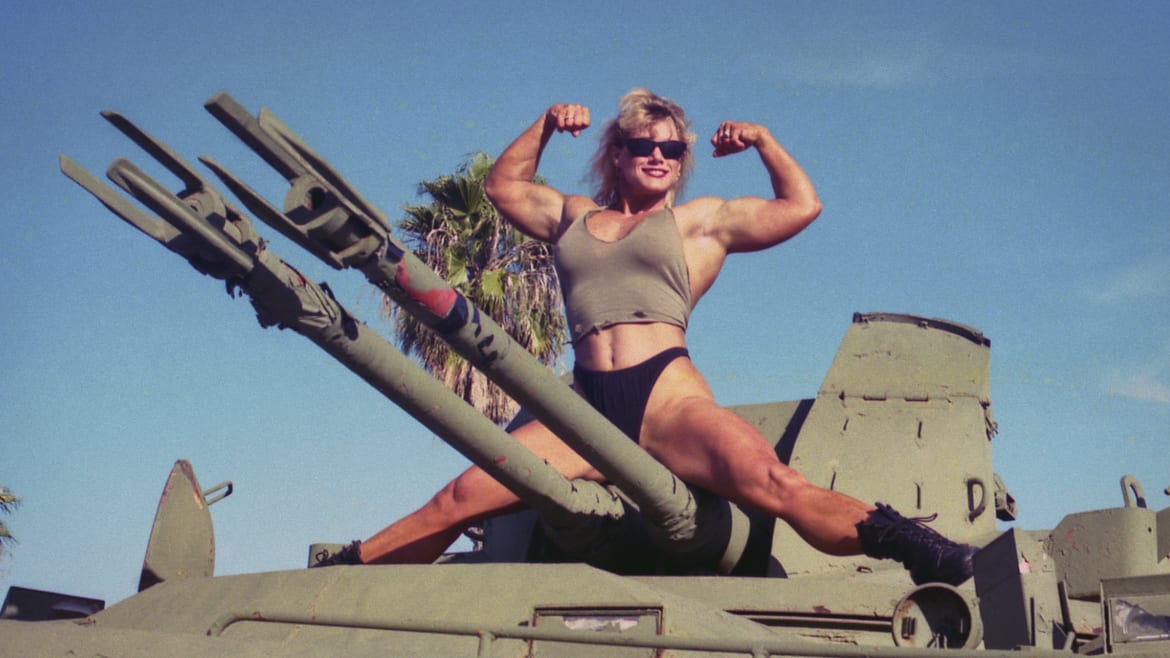Courtesy of Netflix
Sally McNeil’s story was built for 1990s tabloid news. A former Marine Corps Sergeant who’d become an amateur bodybuilder and was married to Mr. Olympia contestant Ray McNeil, Sally resembled a larger-than-life female version of Hulk Hogan, and that provided an attention-grabbing headline angle when, on Valentine’s Day 1995, she killed her husband with a shotgun in their apartment in Oceanside, California. Prosecutors—and many of Ray’s friends—contended that she was a cold-blooded murderer while Sally claimed self-defense, detailing a history of brutality at the hands of her steroid-hungry spouse. It was a unique case of domestic abuse and ensuing tragedy made all the more colorful by the cartoonish physiques of its main players as well as the fact that Sally often earned a living producing and performing in fetishistic wrestling videos.
Director Nanette Burstein’s three-part Netflix docuseries Killer Sally (Nov. 2) makes no bones about the fact that Sally shot her husband, and there’s little dispute that Ray had a habit of getting physical with his wife. Many other specifics about this saga, however, are difficult to wholly discern, and Burstein’s even-handed investigation—led by interviews with Sally, her now-grown children Shantina and John, attorneys, and Sally and Ray’s friends—shrewdly embraces complication, contradiction, and doubt. Far from offering a definitive verdict about Sally’s guilt or innocence, it instead affords a thornier view of lives steeped in violence, and the unfortunate (if, it seems, somewhat inevitable) ramifications of that hostility for everyone involved.
Killer Sally begins with the 911 call that Sally placed in the aftermath of her fatal encounter with Ray, but its carnage dates back to her childhood, first with an abusive father and then with a similarly vicious stepfather who prized his own flesh-and-blood kids over her and actively stymied her collegiate career. A star athlete, Sally responded by enlisting in the Marines and promptly earning her place alongside her tough, gung-ho comrades. It was there that she began lifting weights and met her first husband, with whom she had Shantina and John. Unfortunately, he turned out to be an aggressive man whom she had to flee by transferring to California’s Camp Pendleton—a cycle of abuse that would again repeat itself when she met Ray, an enormously buff Marine who, like her, found joy and success in amateur bodybuilding. Her first competition was the 1987 Armed Forces Bodybuilding Championship, in which she placed fourth. Three years later, she and Ray both won the event, thereby further strengthening their relationship and feel-good narrative.

